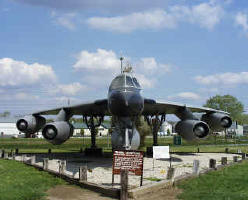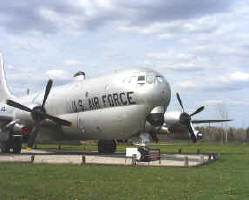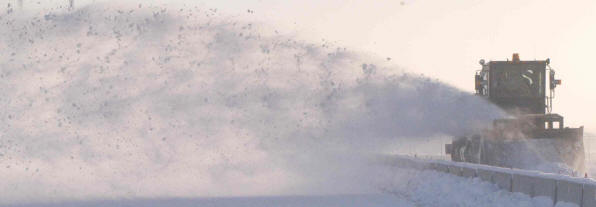| SAC Bases: Bunker Hill
/ Grissom
Air Force Base |
|
|
Some of the aircraft on
display at the Grissom Air Museum |
 |
 |
 |
| B-58 Hustler |
KC-97 Tanker |
B-47
Stratojet |
|
The history of Grissom
Air Reserve Base dates to July 1, 1942 when it was opened by the U.S. Navy.
At that time it was named Bunker Hill Naval Air Station and served as a
training base for naval pilots. During the four years of Bunker Hill NAS,
thousands of pilots were trained for the Navy, Marines and Coast Guard. One
of its most famous alumni of Bunker Hill NAS is former major league baseball
star Ted Williams.
After the war, the base was closed and it
reverted to its former use as farmland. With the outbreak of the Korean War,
the Air Force needed a base where it could conduct nationwide and worldwide
operations. Again, Bunker Hill become the logical choice. Negotiations were
begun with the Navy (who still had the title to the site) to reopen the base
as Bunker Hill Air Force Base. To simplify the legal aspects of
construction, it was decided that the Navy would let all major contracts and
supervise construction of the nearly $25 million in new facilities. In 1982,
the Air Force gained the title to the base from the Navy.
The base was reopened as a Tactical Air
Command Base. The formal opening was June 22, 1954. That year, the 4433rd
Air Base Squadron and the 323rd Fighter-Bomber Wing called Bunker Hill Air
Force Base home. In 1955, the Air Defense Command's 319th Fighter
Interceptor Squadron joined the forces at the base. The Strategic Air
Command arrived on the scene in the mid-fifties and SAC's 8th Air Force
assumed jurisdiction of the base on September 1, 1957.
In May 1959, the 305th Bomb Group and its B-47s
arrived. Later that same year, the first KC-135 Stratotankers were assigned
to the unit. Two years later, B-58s began replacing the B-47s. After 26
years of bearing the name Bunker Hill, the base was renamed on May 12, 1968
after Lieutenant Colonel Virgil I. "Gus" Grissom, a native of Mitchell,
Ind., who was one of the original seven astronauts. Colonel Grissom was
killed during a fire in his Apollo capsule while still on the launching pad
at Cape Kennedy, Fla.
On Jan. 1, 1970, the 305th Bomb Group was
replaced by the 305th Air Refueling Wing and Grissom became one of the
largest tanker bases in the country. The Air Force Reserve became part of
the Grissom community in 1971 when the 434th Special Operations Wing and its
A-37 aircraft moved to the base. For the next 23 years Grissom was home to
both active duty and reserve personnel.
In 1978, a second Air Force Reserve unit joined the
scene. At the height of its operations, the base was home to one active duty
wing and two Air Force Reserve units. Due to changes in the Air Force
mission, two units (one reserve, one active duty) were deactivated in 1994.
In October of that year, Grissom was realigned as an Air Force Reserve
facility. Today, the base is home to the 434th Air Refueling Wing and is one
of only four Air Reserve Command Bases in the nation.
Grissom Air Reserve Base plays an important role in the
Indiana economy. It has a combined military-civilian work force and is the
largest employer in Miami county and the third largest in north central
Indiana. It is estimated the base has an annual economic impact of $75
million. |
|

|
|
Those who served in SAC's
northern bases remember this sight. |
|
